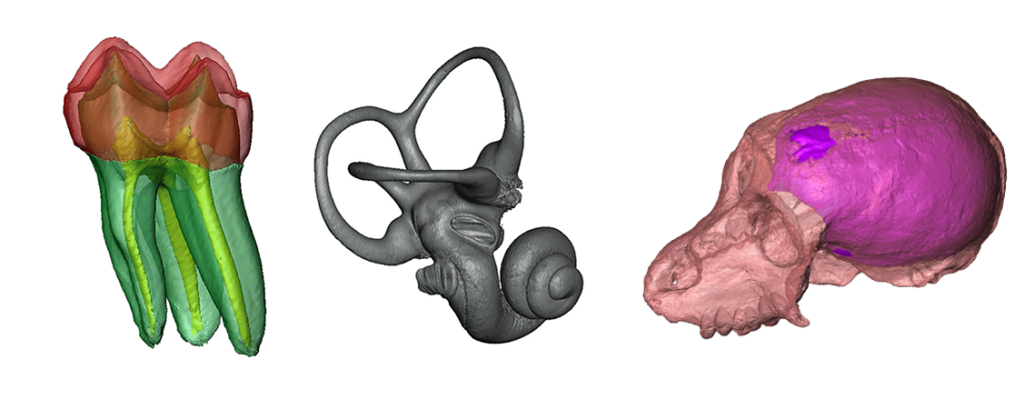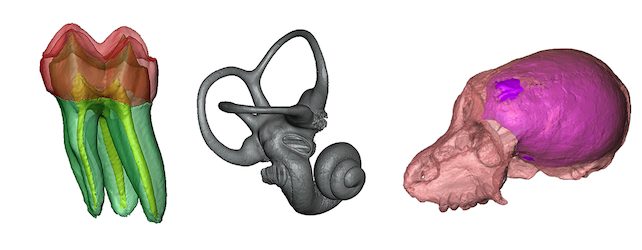The Old World monkeys (or cercopithecoids) are relatively abundant in the Plio-Pleistocene African ecosystems and are nearly systematically found in association with the early hominins. Besides being acknowledged as sensitive ecological and biochronological markers, this family of primates is considered as a relevant “control group” for contextualizing hominin adaptations. In this context, I am developing and coordinating projects involving southern African Old World monkey fossil assemblages that aim at reconstructing the diversity of the Old World monkeys in Africa during the Plio-Pleistocene and exploring the cerebral condition in extant and extinct taxa.

- Despite the abundance of cercopithecoids in the African fossil record, uncertainties regarding the number of taxa and identification of isolated craniodental specimens remain. We revised the fossil record from South Africa and proposed new diagnostic criteria in the inner ear and the internal structural organization of the upper third molar (link).
- For now, relatively little is known about patterns of cercopithecoid brain evolution. We reported new estimates of the cranial capacity as well as variation in the sulcal pattern and morphology of the endocast for southern African Plio-Pleistocene cercopithecoids (link).
- In 2015, we described a new cercopithecoid specimen from the archeological and paleontological area of Melka Kunture, in the Ethiopian highlands, that contributes to our understanding of the paleobiodiversity of Theropithecus (link).
- Fossil primates from South Africa are often found embedded in block of indurated breccia. In 2016, we experimented a new technique based on neutron microtomography to describe the specimen Sts 1039 from Sterkfontein that was embedded in hard breccia (link).
- The papionin specimen UW 88-886 from the Australopithecus sediba-bearing site of Malapa potentially represents the earliest modern baboon. Given the implication of UW 88-886 for the understanding of the papionin evolutionary history, we decided to non-invasively explore the inner craniodental anatomy of this specimen (link).
- In extant primates, the posterior parietal cortex is involved in crucial functions. To date, little is known on the variation of this region of the brain in non human primates. We investigated parietal lobe variation within the cercopithecid family by combining landmark‐based and landmark‐free geometric morphometric analyses (link).
 3D surfaces of extant cercopithecoid bony labyrinths and enamel-dentine junctions are available online (link).
3D surfaces of extant cercopithecoid bony labyrinths and enamel-dentine junctions are available online (link).
